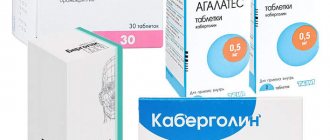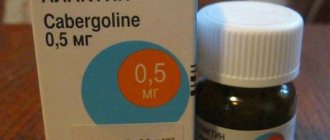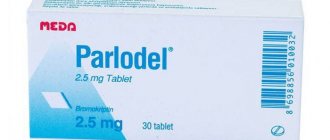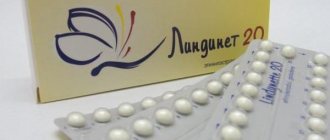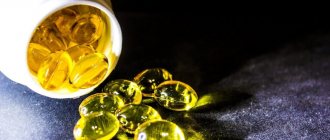After the birth of a baby, some women face the problem of a lack of breast milk for feeding. In 3% this is due to physiological reasons. This problem should be solved comprehensively, using specialized drugs. Mlekoin deserves special attention among them.
This process is influenced by oxytocin and prolactin. Such hormones regulate the formation of breast milk in the female body. As soon as the baby is put to the breast, a signal is sent to the woman’s brain that a baby is born and needs to be fed.
Today, experts identify several reasons that provoke a lack of breast milk in women. Among them:
- Stress associated with troubles, quarrels with loved ones;
- Poor nutrition or lack of sleep, lack of proper rest;
- Insufficient fluid intake (the daily norm for normal lactation is 1.5-2 liters);
- Lack of control over how the baby latch onto the breast;
- Rarely applying directly to the breast.
A child is by nature destined to spend a lot of time under the breast, in the arms of his mother. This is a natural desire of a baby. He wants to feel his mother's warmth and be close to her.
Regardless of the cause of the lack of breast milk, in 98% of cases Mlekoin solves the problem. Taking special granules prescribed by a doctor will have a temporary effect, increase lactation and give the nursing woman confidence.
How to determine a true lack of milk
This criterion is weight gain. Until they reach six months, exclusively breastfed infants should gain at least 600 g per month (20 g per day). This is the minimum safe bar. It ensures that the baby receives enough milk for his internal organs to grow and develop fully. If the baby gains less, this is a reason to look for the reason for this state of affairs. This result may be caused by:
- improper attachment and ineffective sucking;
- errors in organizing the feeding regime;
- problems with the child's health.
In order to timely track the slowdown in weight gain, it is advisable to weigh the baby more often than once a month. The resulting increases are divided by the number of days for which they are calculated. The final figures are compared with the average daily minimum of 20 grams. When the result is significantly less than this bar, it is important not only to work on latching and organizing breastfeeding, but also to simultaneously check the child’s well-being.
When you don't need to worry
If a child up to six months demonstrates favorable weight dynamics, then there is no question of a lack of milk. But if the increase does not please the mother, this is a reason to be wary. And the question of examining the health of the baby turns out to be as important as the amount of its nutrition.
After all, it happens that a child does not gain weight well, but the reason for this lies not in the small amount of milk from the mother, but in difficulties with its absorption. To save the mother from unfounded worries about this, an additional event is carried out - counting wet diapers.
A healthy, well-sucking baby pees on average 10-12 times per day. Of course, during the newborn period these numbers look different. But for older children, these frameworks can be used as a guide.
If the result is within the normal range, but the weight gain is below the minimum, this means that the child receives the optimal amount of milk, but cannot fully absorb it. Therefore, the mother does not need to take Mlekoin for lactation or otherwise stimulate milk secretion. In such a situation, it is necessary to contact a pediatrician and carefully examine the baby.
Video on the topic Nina Zaichenko will talk about ways to increase lactation
Ways to regulate milk production
In particular cases, with prolonged poor-quality breastfeeding, the mother’s milk production may actually decrease. And then, in fact, you need to direct efforts to increase milk secretion. But to understand whether taking Mlekoin will be useful for increasing lactation, it is worth delving into the essence of milk secretion.
The formation of secretion in the mammary gland occurs in response to an increase in the concentration of prolactin in the blood. The higher this indicator, the more stable milk production will be. And frequent stimulation of the nipple and areola (sucking and expressing the breast) helps maintain a constant level of this hormone. In this case, both processes must occur correctly and painlessly.
A nursing mother who faithfully nurses a baby under six months old at least 10-12 times a day (including at least once or twice at night) is unlikely to encounter a sudden shortage of milk. After all, it fulfills two key conditions for successful lactation:
- provides regular breast stimulation;
- helps the baby to empty the gland effectively - applies it correctly.
Of course, in such a situation, the mother needs a guideline that will tell her that her efforts are yielding a positive result. To do this, every three days the child’s weight is measured and his average daily gain is calculated. When it exceeds 20 g, we can say with confidence that the baby is full, and mom can forget about her worries.
Therefore, women who are faced with the need to increase lactation should work in these two directions. Therefore, additional measures in the form of drinking plenty of fluids and “lactogonine” medications by themselves will not affect the amount of milk. If a nursing mother uses them in combination with the steps described above, the result will definitely be achieved. But not thanks to the abilities of the drugs, but due to the correct efforts of the mother herself.
Description of "Mlekoin" for lactation
The dosage form of “Mlekoin” is small granules. According to the instructions for use, it contains three main components.
- Meadow lumbago. Used in folk medicine as a diuretic, sedative, and analgesic. It is also recommended for depression, irregularities in the menstrual cycle, and digestive diseases.
- Agnus cactus. It is considered useful for normalizing the level of female sex hormones.
- Stinging nettle. It is used for diseases of the female reproductive system, urolithiasis, bleeding and convulsions.
Terms and conditions of storage
The manufacturer strongly recommends keeping this homeopathic medicine away from children. It is also important to maintain a certain temperature regime, within 25°.
It is best for Mlekoin to be stored in a dark place, in its original packaging. Then the shelf life will be maximum. It will be three years. The drug can be purchased without a prescription at pharmacies. However, it is important to pay attention to the expiration date. After its expiration, it is prohibited to use Mlekoin.
pharmachologic effect
The instructions indicate that “Mlekoin” accelerates uterine contractions after childbirth and has a lactotropic effect (stimulates the formation of prolactin and milk secretion). There is no detailed description of the principle of the drug’s effect on lactation.
Indications for the use of "Mlekoin" are:
- deficiency of breast milk (initial and late stages of hypogalactia);
- prolongation of the breastfeeding period;
- prevention of mastitis.
"Mlekoin" has only one contraindication - individual sensitivity to its composition.
For reference: the hormone prolactin is lactotropic. This means that thanks to it, the mammary gland grows and develops in the body of a nursing mother, the primary production of colostrum and the subsequent formation of milk occur.
Possible side effects
The homeopathic remedy Mlekoin is well tolerated in most cases. Side effects usually do not occur. However, in rare cases, allergic reactions have occurred. These are isolated rashes or redness on the skin. They can appear in both a nursing mother and her baby. In such situations, the drug is discontinued.
In addition, among the side effects, an important fact is noted: at the beginning of taking Mlekoin, lactation sometimes worsens slightly. But when the required therapeutic concentration of active substances is reached in the body, there is a multiple increase in the volume of breast milk produced.
Before using this drug, be sure to read the instructions for use, study the composition, determine the tolerability of each component and, of course, agree on the therapeutic regimen with an experienced doctor. This will eliminate the occurrence of side effects. In addition, you should not practice combination treatment regimens on your own. Any combination of medications should be discussed with a qualified healthcare professional.
Child safety
Any medications that a nursing mother plans to take should be checked for compatibility with breastfeeding. This means that the drug should be harmless to an infant receiving breast milk and should not have a suppressive effect on lactation.
As a rule, in the annotation to the medicine there is a column devoted to the issue of its safety during breastfeeding. Considering that “Mlekoin” is considered a lactotropic agent, the conclusion arises that it is fully compatible with breastfeeding. However, if you delve a little deeper into the study of its composition and additionally check the active components in reliable sources, the perception of the situation changes.
Video on the topic How to increase lactation? Proven methods
Data from authoritative sources
According to the international reference book E-lactation, agnus cactus contains organic compounds that have an effect similar to that of dopamine. They inhibit (suppress) the secretion of prolactin. Thus, this substance may have the opposite effect of what it says on the label. Therefore, the E-lactation website assigned it the status of “high risk” (the component is incompatible with breastfeeding). Yakovlev Yakov Yakovlevich, a breastfeeding consultant and a well-known domestic pediatrician with more than 21 years of experience, classifies agnus cactus as an herb that should absolutely not be used by a nursing mother.
The same sources indicate that nettle is acceptable during breastfeeding, but as prescribed by a doctor and in small doses. There is no scientifically confirmed information about its penetration into human milk.
Meadow lumbago is a very poisonous plant. Therefore, it is taken in strict accordance with the doses prescribed by the doctor. It is unknown to what extent the substance is absorbed into breast milk and what effect it may have on the baby.
Considering the possible negative impact of some components of Mlekoin on a nursing mother and her baby, as well as the lack of proven effectiveness of the drug, it is impossible to reliably say how safe it is for the mother-child pair. If a woman wants to take it, she should consult a doctor before doing so. Meanwhile, WHO is not ready to recognize the benefits of homeopathic remedies for humans. After all, the study of traditional medicine goes beyond its powers.
Application diagram
If the doctor has not told you how to take Mlekoin for lactation, you can use the standard dosage. It consists of five Mlekoin granules at a time. They should be absorbed until they disappear completely. The drug is taken half an hour before meals.
The manufacturer clarifies that it is advisable to start treatment with Mlekoin one and a half weeks after birth. It is recommended to discontinue use only after completion of lactation.
Patient reviews
Ilona, 25 years old : “After the birth of my daughter, at first there was milk, but then it sharply decreased. The doctor recommended Mlekoin tablets. The first week I took it twice a day according to the instructions. But after the first dose, the amount of milk increased noticeably.”
Natalia, 32 years old : “I fed my first child for a very long time - more than 2 years. With the second, milk began to be lacking two months after giving birth. We tried the medicine Mlekoin. It didn't help me at all. I thought that at first the improvement would be unnoticeable, but even after a week nothing had changed. We switched the baby to partial artificial feeding.”
conclusions
The opinions of nursing mothers about “Mlekoin” are divided: some claim that the product has helped them wonderfully, others have not noticed any effect, and some have accused the medicine of having the opposite effect on lactation. Reviews from doctors are also contradictory. There are supporters of homeopathic remedies, including during lactation. And other doctors adhere to the position of the World Health Organization regarding traditional medicine.
Thus, “Mlekoin” for increasing lactation is an ambiguous and even dubious remedy. It contains substances with unproven effectiveness. Moreover, one of them can reduce milk secretion. But sometimes mothers, along with adequate measures to stimulate milk production, want to additionally take some kind of “lactogonic” drug. In this case, you should choose from the list of the safest means. Analogues of “Mlekoin” can be considered “Apilak”, “Laktogon”, “Lactamil”. If their use brings psychological comfort to the mother and gives her confidence in her abilities, she can include them in her diet, subject to monitoring the baby’s condition and strictly following the instructions of the attending physician.
Video on the topic 13 ways to enhance lactation from Olga Kachanova
Analogues substitutes
The medicine Mlekoin in the form of dragees has several analogues:
- Apilak is produced in tablet form based on royal jelly and with the addition of mineral components. Manufacturer: VIFITECH (Russia), GRINDEX (Latvia).
- Lactogon is produced in the form of tablets with royal jelly, oregano, nettle, dill, carrot juice, potassium iodide and vitamin C. (Russia).
Photos of substitutes:
Apilak
Laktogon
